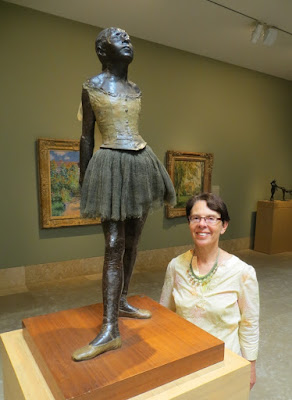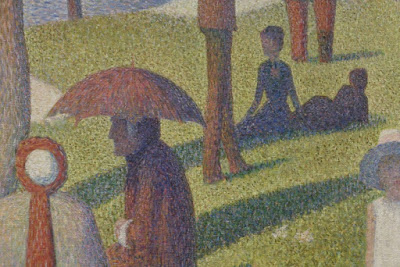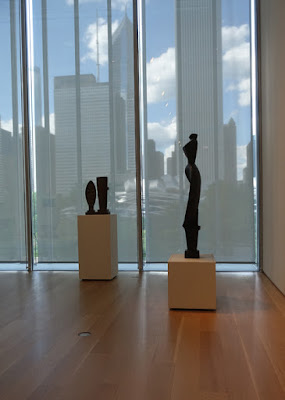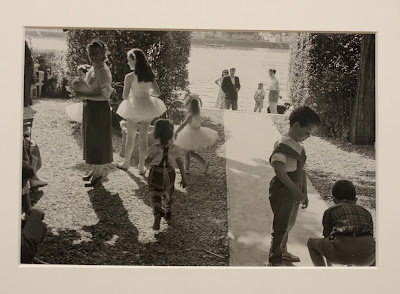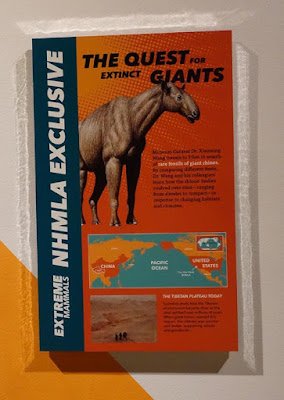 |
| Chicago Skyscrapers |
No one who visits Chicago can fail to be impressed by the soaring skyscrapers and other large historic buildings that crowd the downtown. One of the best ways to appreciate their beauty, origin, and role in Chicago’s history is to take a river cruise sponsored by the
Chicago Architecture Foundation, which I did on a recent visit. The cruises are narrated by knowledgeable volunteers who point out key features of the buildings, tell about who designed them and when, and about their significance.
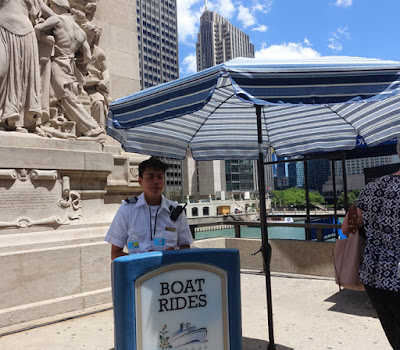 |
| We are directed to the dock at the top of the stairs to the river walk |
It was a beautiful sunny day, not too warm or windy. To board the boat we went to the dock, located on the river walk just east of the stairs descending from Michigan Avenue.
 |
| Chicago River and River Walk |
We sat in long rows of chairs on the top deck of the ship, affording us with a 360 degree view of our surroundings. The trip began by sailing westward up the river to the north branch, passing under numerous bridges. Although built as drawbridges, we were told that they are now raised only twice a year, in spring and fall, to let large boats into or out of their winter docks. After the cruise was finished, we walked along the river and visited one of the bridge houses, now turned into a museum.
 |
| View of the bridge from inside the bridge house |
Most of the buildings in Chicago today were constructed after the great Chicago Fire of 1871 that had destroyed much of the city. As we made our way up the river, it was a trip through history, although jumbled together. Side by side are old and new, lavishly decorated and starkly plain, utilitarian and almost whimsical.
 |
| Going under the Dearborn Street Bridge |
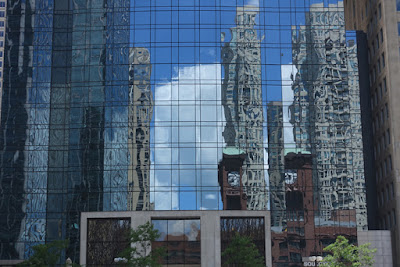 |
| Reflections |
I was particularly fascinated by the reflective glass of some buildings that echoed and altered their neighbors across the river. Or, in some cases, the river itself.
River Point marks the confluence of the river's main stem with its two branches. The arches at the top and the bottom are designed to reflect the shape of the building and the curves of the surrounding banks--both literally and figuratively .
 |
| River Point, built 2017. Designed by Pickard Chilton Architects |
Marina City, built in 1967, are two giant towers that are part of a multi-use complex. The curved balconies remind people of giant corncobs.
 |
| Marina City towers |
At the end of the cruise we headed toward Lake Michigan, turning around at the Marina. To our left was the amusement park on Navy Pier.
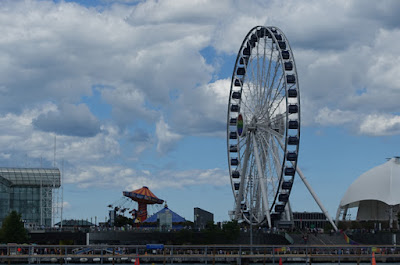 |
| Giant Ferris Wheel, Navy Pier |
As we turned around we were treated to the full panorama of the Chicago skyline. It was spectacular.
After docking, we ate lunch at one of the many riverside restaurants, and then took a walk along the river to enjoy the sights and sounds of life along the water's edge. I thank Jim Akerman and Luann Hamilton and their daughter Claire, for treating me to this wonderful view of their city and for being most generous hosts during my visit.
To learn more about Chicago architecture, visit
www.architecture.org
 |
| View of skyline from the cruise |


